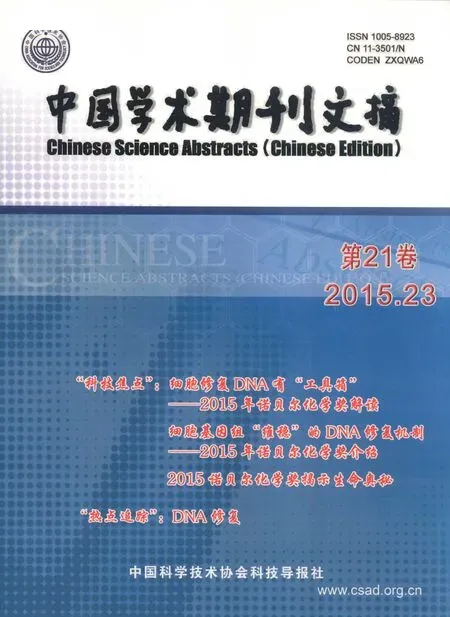腫瘤學(xué)
腫瘤學(xué)

來源出版物:Chinese Journal of Cancer, 2015, 34(10): 439-449
聯(lián)系郵箱:Theo A. Knijnenburg, theo.knijnenburg@systemsbiology.org
封面介紹:At a bird’s eye view all cancers share the same set of deregulated biological processes, termed the hallmarks of cancer. Yet, at the molecular level cancers appear very different, e.g. they can have widely differing mutation landscapes. The paper by Knijnenburg et al. describes a map that connects genes via pathways to cancer hallmarks. By projecting gene mutation data from various cancer types onto this map, the authors investigate the similarities and differences between cancer types, not only on the level of genes, but also on that of pathways and hallmarks. For more details, please read the article on pages 439-449. (The original cover art is created by Allison Kudla at the Institute for Systems Biology.)
A multilevel pan-cancer map links gene mutations to cancer hallmarks
Theo A. Knijnenburg, Tycho Bismeijer, Lodewyk F. A, et al.
A central challenge in cancer research is to create models that bridge the gap between the molecular level on which interventions can be designed and the cellular and tissue levels on which the disease phenotypes are manifested. This study was undertaken to construct such a model from functional annotations and explore its use when integrated with large-scale cancer genomics data. Methods: We created a map that connects genes to cancer hallmarks via signaling pathways. We projected gene mutation and focal copy number data from various cancer types onto this map. We performed statisticalanalyses to uncover mutually exclusive and co-occurring oncogenic aberrations within this topology. Results: Our analysis showed that although the genetic fingerprint of tumor types could be very different, there were less variations at the level of hallmarks, consistent with the idea that different genetic alterations have similar functional outcomes. Additionally, we showed how the multilevel map could help to clarify the role of infrequently mutated genes, and we demonstrated that mutually exclusive gene mutations were more prevalent in pathways, whereas many co-occurring gene mutations were associated with hallmark characteristics. Conclusions: Overlaying this map with gene mutation and focal copy number data from various cancer types makes it possible to investigate the similarities and differences between tumor samples systematically at the levels of not only genes but also pathways and hallmarks.
cancer systems biology; cancer hallmarks; gene mutations; multilevel model

